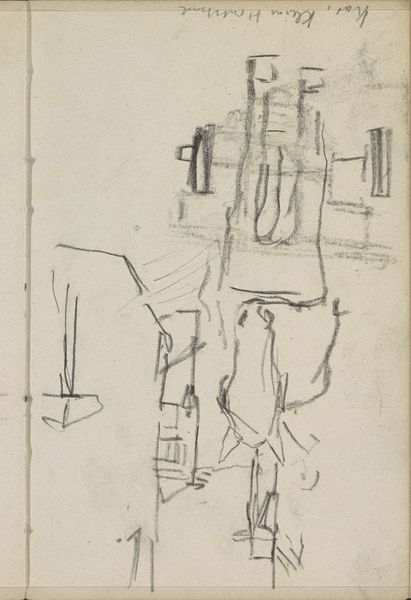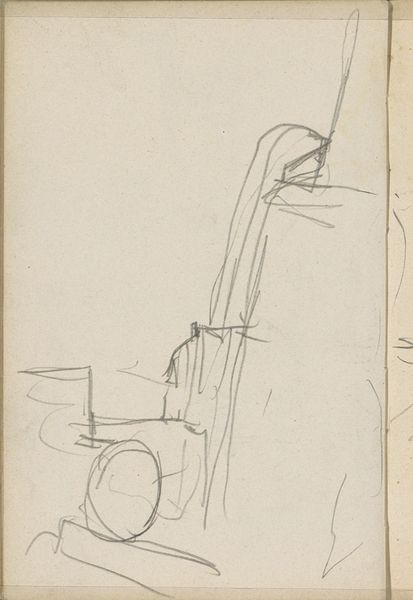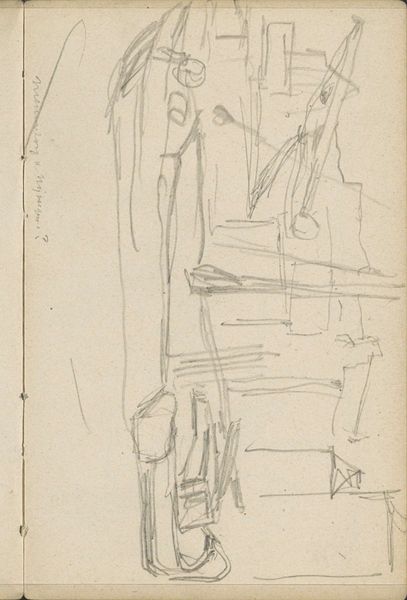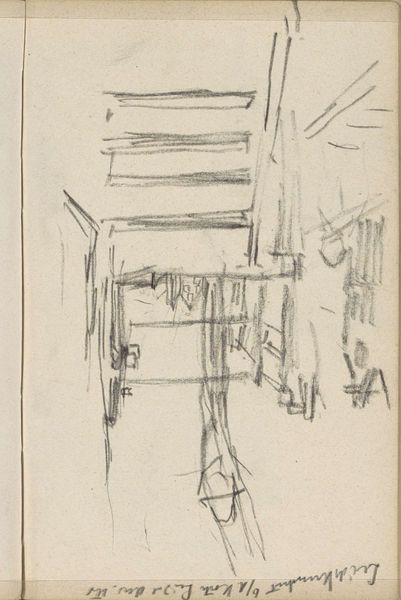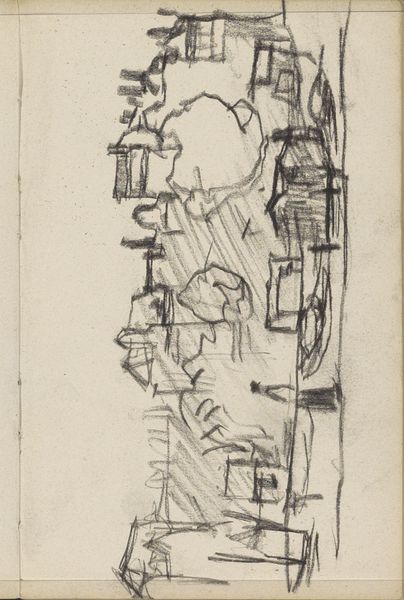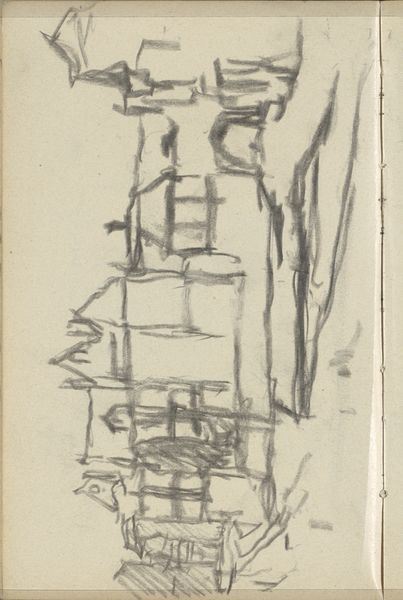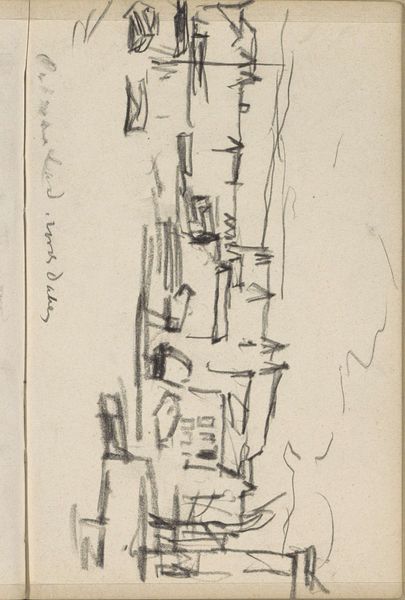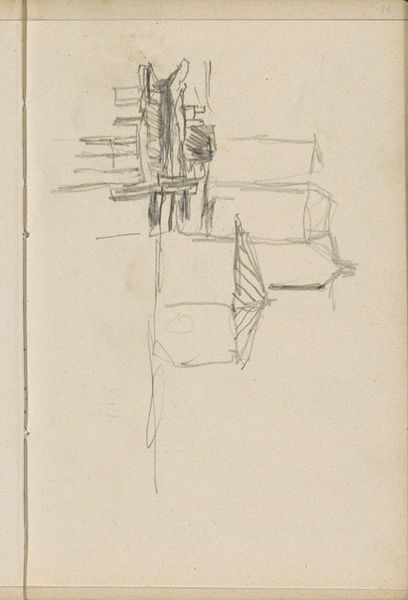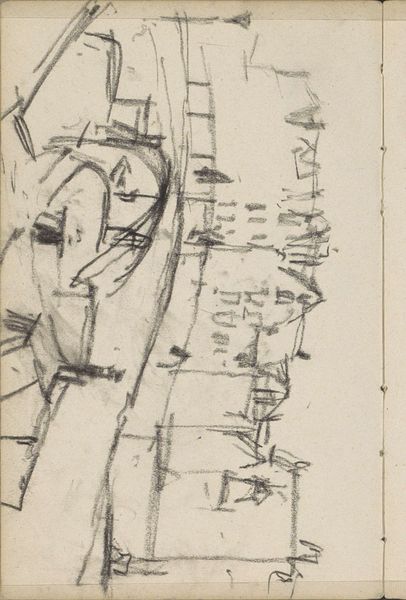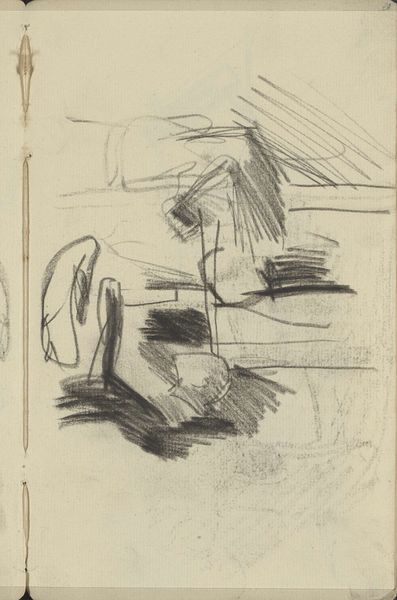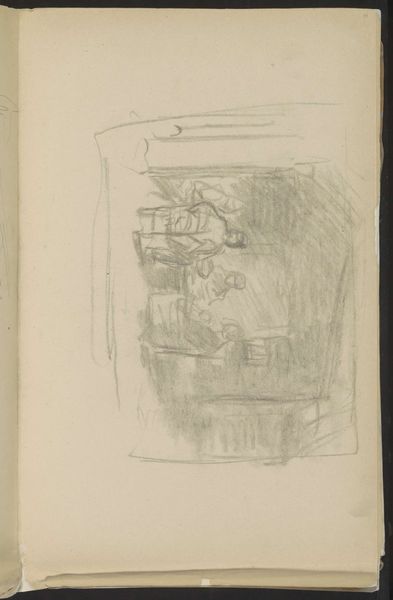
Gezicht op de Sloterdijkbrug te Amsterdam Possibly 1907 - 1911
0:00
0:00
Copyright: Rijks Museum: Open Domain
Editor: This sketch, "Gezicht op de Sloterdijkbrug te Amsterdam," possibly created between 1907 and 1911 by George Hendrik Breitner, captures a cityscape using a simple pencil. I'm struck by how minimal it is, yet it still conveys a sense of place. What’s your interpretation of this work, considering Breitner's context? Curator: This drawing provides us a window into Breitner's engagement with representing modern Amsterdam. While seemingly a quick sketch, we have to consider its socio-political resonance. The Sloterdijkbrug, being part of a growing city, symbolized progress and industrialization. Breitner, associated with the Amsterdam Impressionism movement, often captured the city's pulse. Does this image challenge or conform to the prevalent depictions of urban life in that era, in your opinion? Editor: It seems almost… grittier. Less romantic than some of the paintings from that time. Almost like he wanted to represent the truth of that progression, if that makes sense? Curator: Precisely. Breitner often focused on the working classes and the unvarnished reality of urban existence. This piece, however fleeting in its execution, speaks to the democratization of subject matter in art. The bridge, though a sign of progress, isn't idealized. The hurried strokes could reflect the pace of modern life. Do you think the lack of polish makes the work less ‘valuable’ as an historical document of its time? Editor: No, I think it arguably makes it *more* valuable. It provides more nuance! It’s like seeing the scaffolding *behind* progress. Thank you, that’s been incredibly insightful! Curator: My pleasure. It is through such dialogues that we reveal the ongoing relevance of art's connection with its past, wouldn’t you say?
Comments
No comments
Be the first to comment and join the conversation on the ultimate creative platform.

